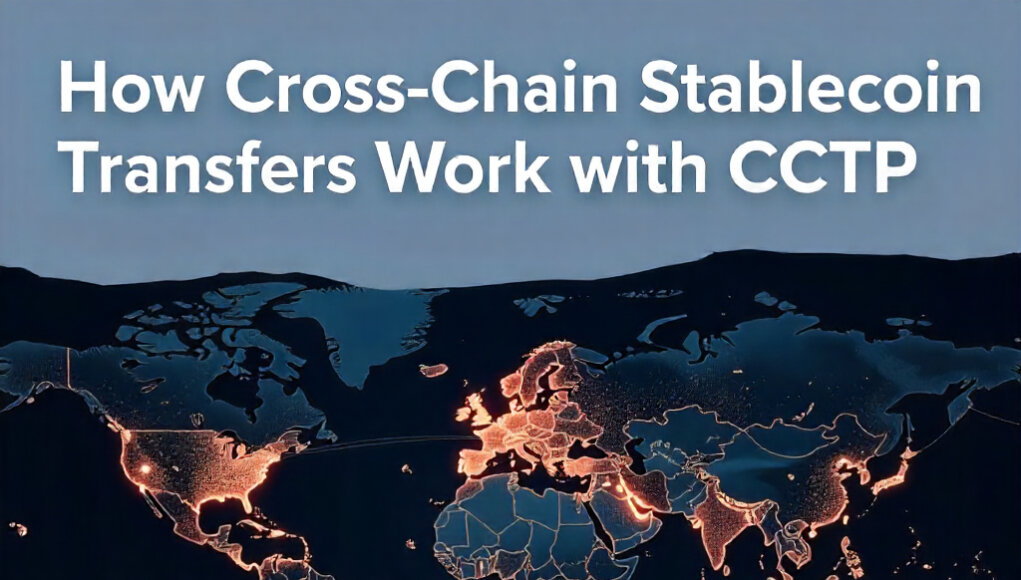As the crypto landscape becomes increasingly fragmented, the ability to move stable assets seamlessly between different blockchain networks isn’t just convenient; it’s becoming absolutely essential.
How Cross-Chain Stablecoin Transfers Work with CCTP
Cross-chain transfers represent the digital equivalent of a financial Swiss Army knife. They solve a critical problem in the blockchain ecosystem: asset mobility. Traditional blockchain networks often operate like isolated islands, making asset movement complex and expensive. Enter innovative solutions like Circle‘s Cross-Chain Transfer Protocol (CCTP), which is revolutionizing how we think about digital asset movement.
The Magic Behind Cross-Chain Transfers
At its core, cross-chain transfer technology operates through a fascinating “burn-and-mint” mechanism. Here’s how it works: when you want to transfer USDC from Ethereum to Solana, the protocol “burns” (permanently destroys) your tokens on the source chain and simultaneously “mints” an equivalent amount on the destination chain. Think of it like a blockchain teleportation device that ensures your assets arrive intact and in the exact same quantity.
The real game-changer is speed. With CCTP V2, transaction times have dramatically dropped from minutes to mere seconds. For DeFi enthusiasts and traders, this means near-instantaneous asset mobility – a critical advantage in a market where every second counts.
The Ecosystem of Cross-Chain Solutions
Several innovative platforms are pushing the boundaries of cross-chain transfers:
- Circle’s CCTP: Specializes in USDC transfers across Ethereum, Avalanche, and Solana
- Allbridge Core: Supports transfers between EVM and non-EVM chains
- Rhino.fi: Offers a decentralized liquidity layer across 35+ blockchain networks
Each platform brings unique strengths, but they share a common goal: breaking down the walls between blockchain ecosystems and creating a more fluid, interconnected digital financial landscape.
Challenges and Considerations
Despite the exciting potential, cross-chain transfers aren’t without risks. Security vulnerabilities in bridge technologies remain a significant concern. Centralized bridges can become attractive targets for hackers, making robust encryption and decentralized approaches crucial.
Liquidity management presents another complex challenge. Ensuring sufficient asset availability across different chains requires sophisticated financial engineering and continuous monitoring.
For developers and crypto enthusiasts, understanding these nuances is key. Cross-chain transfer technologies aren’t just technical solutions; they’re building the infrastructure for a more accessible, interconnected financial future.
As blockchain technology continues to evolve, cross-chain stablecoin transfers will likely become as commonplace as international bank transfers are today. The future of finance is looking increasingly borderless, instantaneous, and decentralized.
Curious about diving deeper into blockchain and cryptocurrency? Check out Crypto Certification for comprehensive insights into this rapidly changing landscape!
| Feature | Description |
| Protocol | Cross-Chain Transfer Protocol (CCTP) |
| Supported Coins | USDC (USD Coin) |
| Mechanism | Burn-and-mint |
| Speed | Faster transaction settlement (seconds) |
| Platform | Supported Chains | Key Feature | Use Case |
| Circle (CCTP) | Ethereum, Avalanche, Solana | Burn-and-mint for USDC | Fast, secure USDC transfers |
| Allbridge Core | EVM, non-EVM chains | Supports a wide range of stablecoins | Cross-chain liquidity and asset transfers |
| Rhino.fi | 35+ blockchains | Decentralized liquidity layer | DeFi cross-chain swaps and bridging |





